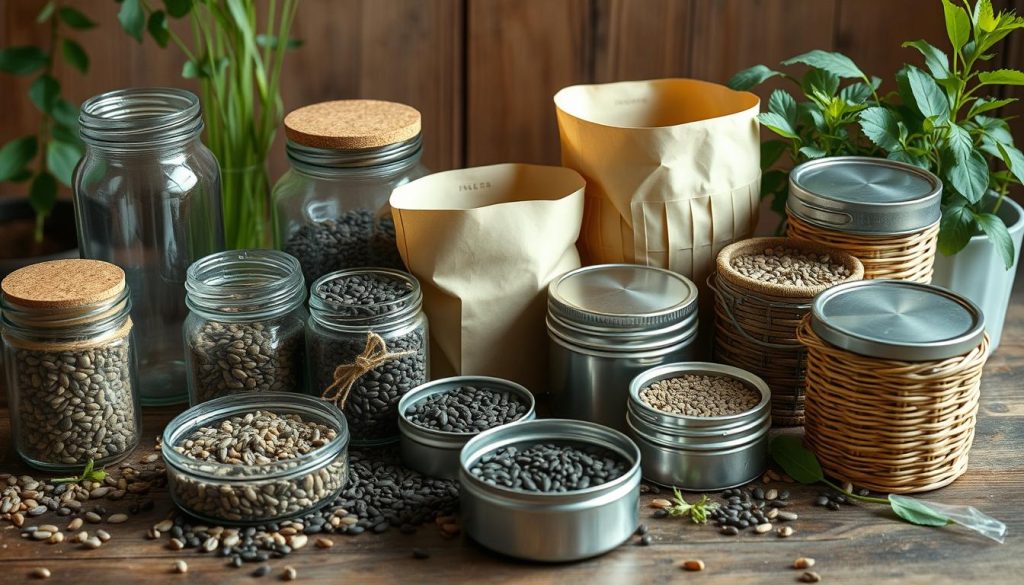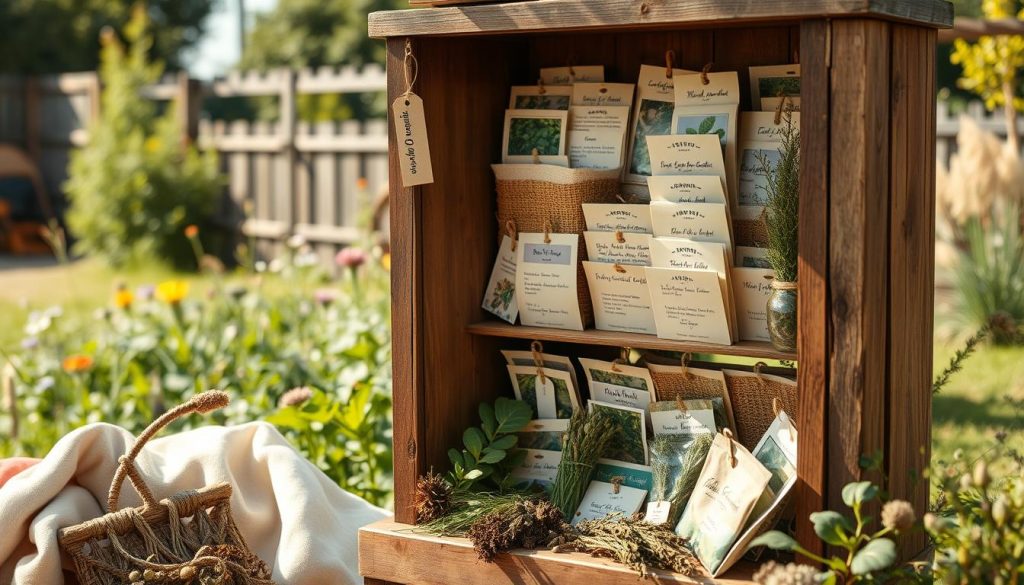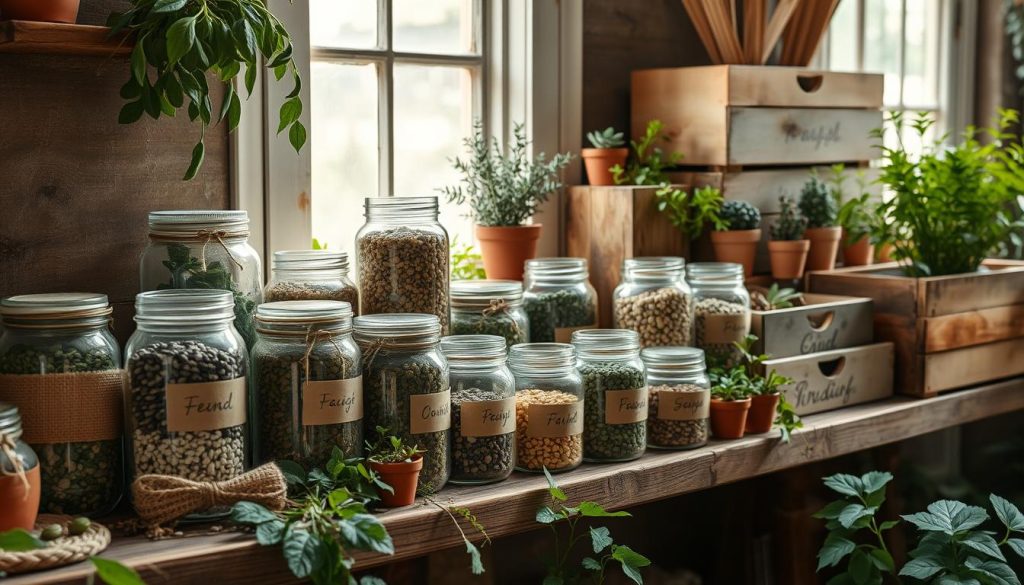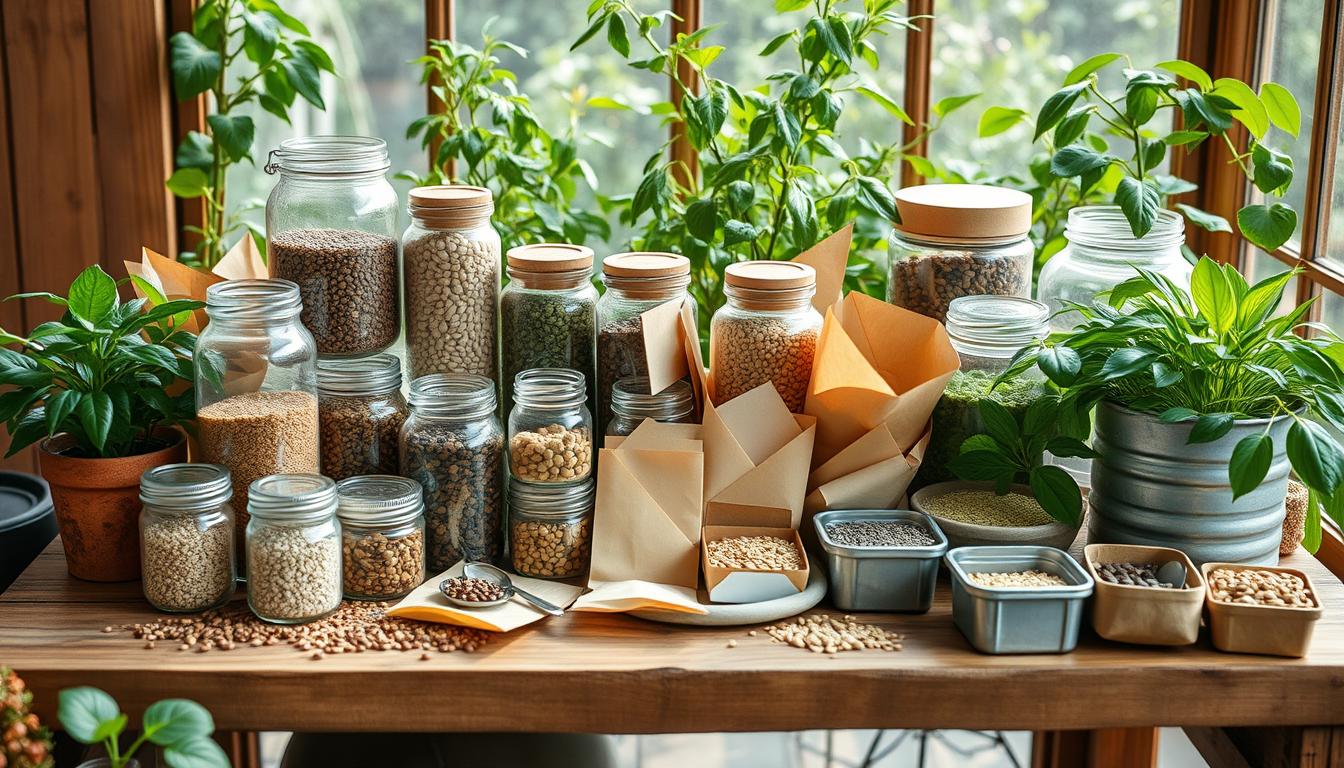As a gardener, I’ve learned the value of zero-waste seed storage. It helps reduce our environmental impact. Traditional methods can lead to waste and pollution. So, I’ve switched to sustainable ways to store seeds.
Using eco-friendly methods not only cuts down on waste. It also saves resources and supports green gardening.
Adopting zero-waste seed storage is simpler than I thought. It has greatly improved my gardening. By picking sustainable options, I’m saving resources and helping the planet.
In this article, I’ll share my best tips for zero-waste seed storage. These will help you switch to sustainable methods and lessen your environmental footprint.
Why Zero-Waste Seed Storage Matters
Exploring zero-waste gardening, I see how crucial it is to use eco-friendly methods for seed storage. Traditional ways can harm the environment and waste resources. It’s vital to find sustainable alternatives.
Zero-waste seed storage helps gardeners lessen their environmental harm and support nature. It means using methods that save resources and cut down on waste. For example, gardeners can use containers they can reuse or find new uses for old items instead of disposable ones.
Reducing Environmental Impact
Zero-waste seed storage is key to eco-friendly gardening. It helps gardeners lower their carbon footprint and support a greener future. Here are some ways to do it:
- Choose natural materials like paper or cloth bags for seed storage.
- Use items you already have at home, like jars, to store seeds.
- Save seeds in ways that waste less and use fewer resources.
Supporting Biodiversity
Zero-waste seed storage also boosts biodiversity. It helps keep heirloom seeds alive and supports a variety of plants. This way, gardeners help keep ecosystems healthy and support local wildlife.
Choosing the Right Containers
Choosing the right containers is key for zero-waste seed storage. Traditional plastic containers add to waste and pollution. So, I choose plastic-free options instead.
Using natural materials and reusing items is a smart move. It cuts down on waste in seed storage. For example, paper, cardboard, and cloth are great for storing seeds without plastic.
Reusing items like jars and bottles is also a good idea. It helps reduce waste and supports eco-friendly storage.
Natural Materials to Consider
- Paper bags or envelopes
- Cardboard tubes or boxes
- Cloth pouches or bags
Reusing Household Items
Reusing household items is a smart way to cut waste. Here are some examples:
- Jars or containers with lids
- Bottles or glass containers
- Cardboard or paper containers

By picking the right containers, we can reduce waste and support the environment. This keeps our seeds healthy and ready for planting.
Organizing Your Seeds Efficiently
To keep a zero-waste seed storage system, you need to organize your seeds well. This means using methods that save seeds in an eco-friendly way. It helps you track your seeds, cut down on waste, and get a good harvest.
Starting with good labeling is key to a well-organized seed storage. I use markers, stickers, and tags to mark each seed type, how much, and when I stored it. This makes it easy to find specific seeds and avoid mistakes. I also keep a seed inventory to track my seeds’ types, amounts, and storage conditions. This inventory is important for keeping seeds fresh and planning for future harvests.
Labeling Techniques I Use
- Using waterproof markers to label seed packets and containers
- Applying stickers to identify seed types and quantities
- Creating tags with essential seed information, such as storage date and conditions
Creating a Seed Inventory
A seed inventory is a great tool for gardeners. It helps me keep track of my seeds, check their quality, and plan for future harvests. By using these techniques, I maintain a sustainable seed storage system. This supports my gardening goals and helps preserve seeds in an eco-friendly way.

Ideal Storage Conditions
To keep seeds fresh, it’s key to store them right. Cool, dry places are best for this. Temperature and humidity are also important. Seeds need to be in airtight containers to keep moisture out.
It’s also important to cut down on waste when storing seeds. Using reusable containers and bags helps a lot. Here are some tips for the best storage:
- Store seeds in a cool, dry spot like a basement or cupboard.
- Use airtight containers to keep humidity steady.
- Label containers with the seed type and when you stored them.
- Keep seeds away from sunlight and moisture.

By following these tips, we can reduce waste and keep seeds fresh. Using natural materials and reusing items is good for the planet. This way, we make sure our seeds stay healthy and help the environment too.
Creative Upcycling Ideas
I’ve found joy in upcycling household items for unique seed storage. This method reduces waste and adds a personal touch to gardening. By using jars, bottles, and containers, I follow eco-friendly seed preservation.
Making seed bombs is a favorite DIY project. I mix clay, soil, and seeds to create small balls for wildflowers. It’s a way to support local ecosystems and biodiversity. I also decorate my containers with paint and stickers, making them fun and creative.
DIY Seed Storage Projects
- Seed starters: Use egg cartons or small pots to start seeds indoors, reducing waste and promoting healthy seedlings.
- Seed envelopes: Create envelopes from recycled paper or cardboard to store seeds, making it easy to label and organize them.
- Seed jars: Upcycle old jars to store seeds, adding a decorative touch to my garden shed or storage area.
Fun Ways to Decorate Containers
Decorating seed containers is a fun way to show my creativity. I use paint, markers, and stickers to make each one unique. This makes my garden more visually appealing and helps me keep track of my seeds.
By using zero-waste gardening practices, I support sustainable gardening. It’s a way to promote eco-friendly seed preservation in my daily routine.
My Favorite Resources for Seed Storage
I’ve shared my best tips for zero-waste seed storage. Now, I want to share some great resources that have helped me. “The Seed Garden” by The Seed Savers Exchange and “The Gardener’s Pantry” blog are full of useful info. They teach you how to store seeds right and why saving seeds is key.
Also, joining local seed libraries has changed the game for me. These places offer many seed types and host workshops on saving seeds. It’s a great way to learn and get involved in the community.
Books and Blogs I Recommend
If you want to learn more about storing seeds without waste, check out “The Seed Garden” and “The Gardener’s Pantry” blog. They have detailed guides on picking the right containers and keeping seeds fresh. They also help you make your seeds last longer.
Community Seed Libraries
Getting involved with local seed libraries has been super helpful for me. They have lots of seed varieties and host workshops. It’s a great place to meet other gardeners and learn new things.

